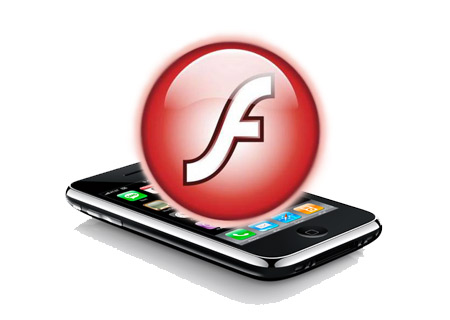Adobe Flash on iPhone
With the arrival of Adobe media server 4.5, the team behind the Adobe creative suite has seemingly bowed to pressure from Apple.
I examine why this has happened and what it will mean for Apple and other manufacturers who already use the Flash framework to display content on their mobile devices.
The History behind a lack of support for Flash on Apple devices:
Apple had claimed that the flash video format was too processor hungry and did not make use of hardware acceleration. For this reason they have chosen to not support the widely used format at all on their mobile devices such as iPad and iPhone.
Since Flash 10.1 Adobe have made use of hardware acceleration but Apple have continued their stance of not supporting it natively.
Adobe pander to Apple – Will Google and Microsoft be happy?
While Apple are still not budging in their overall stance, Adobe must be concerned that so much content is being watched via a totally different player than their own highly successful, dominant force on traditional web browsers, desktops, Android and Windows based devices.
New way of delivery patches the issue for now:

Because Adobe do not want to miss out on the traffic that Apple devices obviously get, they have worked to provide a means of delivering Flash based video by detecting the device and then in Apples case, streaming that content in a format that Apple devices support…sneaky and great for Apple users, as they can now benefit from having flash playback minus the draining of processor and battery power when using Flash as a normal player as is currently the case for Android and Windows based devices.
Even though flash claim to have improved the hardware issue in version 10.1/10.2, Apple seem not interested in allowing Flash to work natively.
This new solution to the old video format war between the two giants is welcome news to Apple users but will no doubt throw into question why other O/S’s and manufacturers are supporting Flash natively when there are still issues around its power consumption which ultimately leads people to negatively comment on a devices battery life.
I for one am not convinced that Flash is so power intensive that it is of any real concern to most users, though maybe the updated version truly is improved as Adobe claim and utilises hardware acceleration more efficiently. I have a Samsung S2 and the battery life is dire on it I have to say, but I have not noticed that using Flash for video playback has really affected my battery life to such an extent where I would only sparingly watch video in the future in order to mitigate the effects Apple claim occur from using Flash.
What Apple want Apple get:
It seems that Apple just can not lose right now, they are very much on the crest of a massive wave, taking the tech World by storm. The Germans are bowing down to their pressure over the Samsung range of devices, and now Adobe are working solutions to fit around Apple’s own stance against Adobe’s own technology.
I have always been very annoyed that Apple stuck their neck’s out and were so stubborn with Adobe over flash. It was actually the main reason I was open minded to other devices rather than the iPhone I obtained just after they came out. Put simply, I missed Flash for various areas such as interactivity online and obviously video. The lack of support hampered my experience and must have lost Apple quite a few sales. So, lucky for them that Adobe have seemingly pandered to their whims, though it appears that this will only be for flash video playback and not full flash functionality as many would like to see.
What next for Apple I wonder?
Anthony Munns